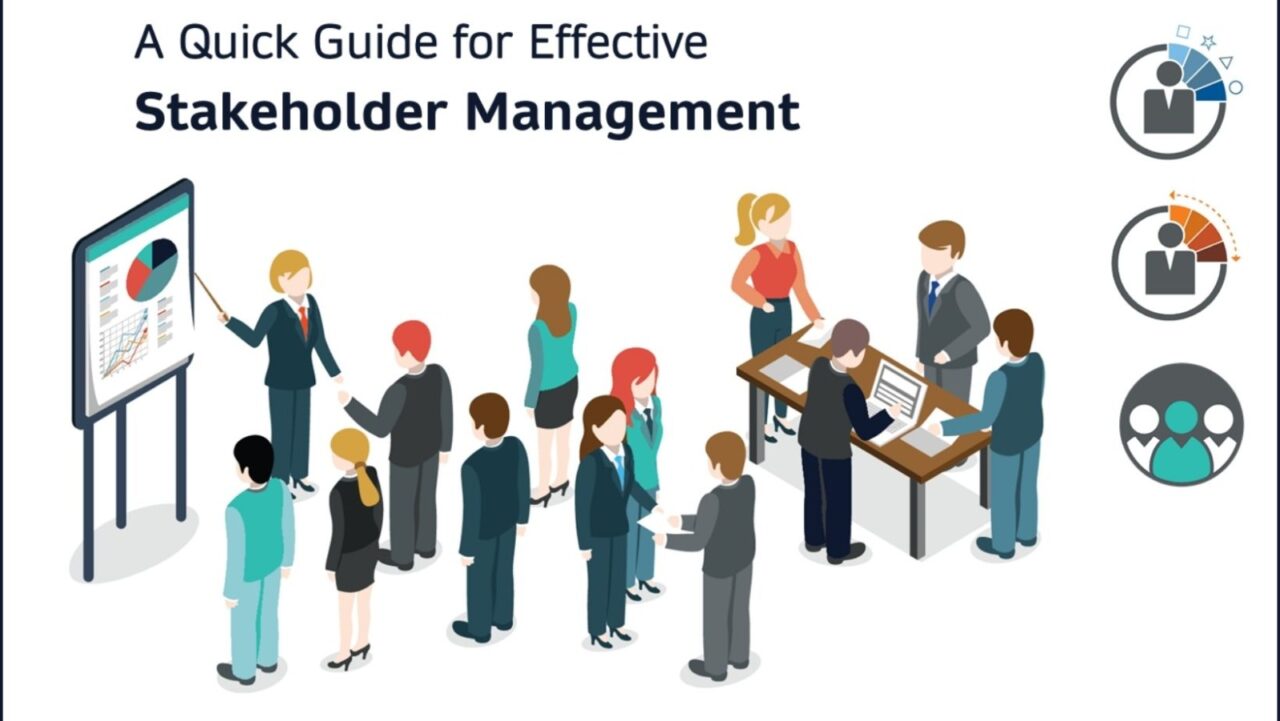How to Manage Stakeholders Effectively
Stakeholder management is a crucial aspect of any project, business endeavor, or organization. Stakeholders are individuals or groups with a vested interest in the success of a project or the overall performance of an organization. These stakeholders can include employees, customers, investors, suppliers, regulatory bodies, and even the local community. Managing stakeholders effectively is essential for achieving project success, maintaining a positive reputation, and ensuring long-term sustainability. In this vlog of Master class with Tapas, I will help you to explore key strategies for managing stakeholders well. Subscribe and like my channel to stay connected with the latest advancements and important topics related to the corporate world. Let’s begin:
Identify and Prioritize Stakeholders:
The first step in stakeholder management is to identify all relevant stakeholders. Conduct a comprehensive stakeholder analysis to determine who they are, what their interests and concerns are, and how they can impact the project or organization. Once identified, prioritize stakeholders based on their influence and level of interest. High-power stakeholders with significant influence and interest demand more attention and engagement compared to low-power stakeholders with minimal impact on the project’s outcome.
Communication is Key:
Open and transparent communication is the backbone of effective stakeholder management. Regularly communicate project updates, milestones, and challenges to stakeholders. Tailor your communication style to suit the preferences of different stakeholders. Some may prefer formal reports, while others may appreciate more informal and personal updates. Active listening is equally important – encourage stakeholders to voice their opinions, concerns, and feedback and address them promptly.
Understand Stakeholder Needs and Expectations:
To manage stakeholders effectively, you must have a deep understanding of their needs and expectations. Engage with stakeholders individually or through focus groups to comprehend their specific requirements and concerns. By catering to their needs, you build trust and credibility, which fosters a positive working relationship. Anticipating potential issues and addressing them proactively can also help mitigate conflicts and keep stakeholders satisfied.
Build Relationships:
Building strong relationships with stakeholders is vital for successful stakeholder management. Invest time and effort in networking and engaging with stakeholders regularly. Attend relevant events, forums, or meetings where stakeholders participate, and use these opportunities to connect with them on a personal level. Demonstrating genuine interest in their opinions and ideas can go a long way in garnering support and cooperation.
Manage Conflicts Strategically:
Conflicts among stakeholders are inevitable, especially when their interests diverge. As a stakeholder manager, it is crucial to address conflicts strategically and diplomatically. Acknowledge differing viewpoints and work towards finding common ground that aligns with project objectives. Encourage open discussions and compromise where necessary, always keeping the project’s best interests in mind.
Set Realistic Expectations:
Ensure that stakeholders have realistic expectations about the project’s outcomes and timelines. Overpromising and underdelivering can lead to dissatisfaction and loss of trust. Be transparent about project constraints and potential challenges, and manage expectations from the outset. By setting clear and achievable goals, stakeholders are more likely to remain supportive and understanding throughout the project’s lifecycle.

Monitor and Evaluate:
Stakeholder management is an ongoing process that requires constant monitoring and evaluation. Keep track of stakeholder engagement, satisfaction levels, and any changes in their expectations or concerns. Adjust your stakeholder management strategies as needed to adapt to evolving circumstances. Regularly reviewing stakeholder feedback and incorporating improvements based on their suggestions demonstrates a commitment to their interests.
Engage Stakeholders in Decision-Making:
Involving stakeholders in decision-making processes can significantly enhance their commitment to the project or organization. Seek their input on key decisions that directly impact them and consider their opinions before finalizing strategies. This collaborative approach not only strengthens relationships but also leads to more well-rounded and informed decisions.
Conclusion
In conclusion, as per Master class with Tapas effective stakeholder management is essential for achieving project success and organizational growth. By identifying stakeholders, communicating openly, understanding their needs, building relationships, managing conflicts, setting realistic expectations, monitoring progress, and engaging them in decision-making, you can cultivate a positive and productive stakeholder environment. Successfully managing stakeholders ensures that their interests align with the project’s objectives, leading to improved project outcomes and stronger support from all involved parties.
